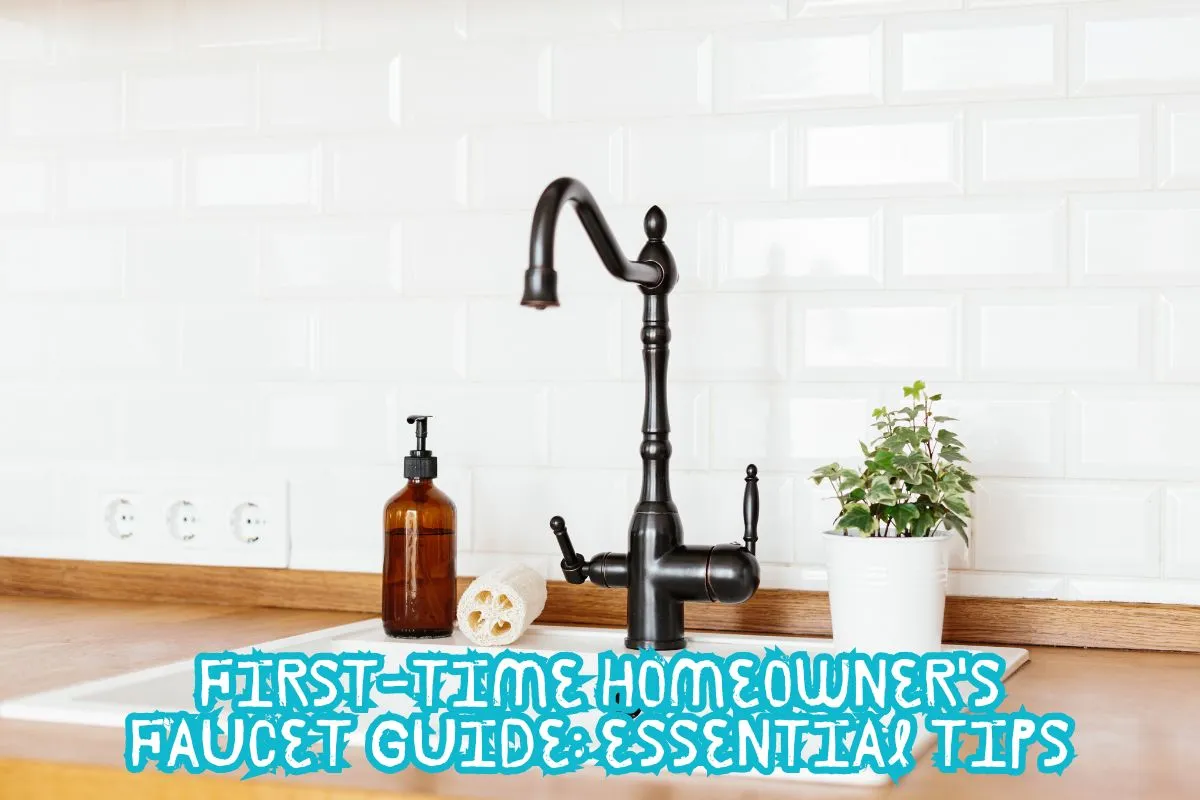Becoming a first-time homeowner is thrilling but can also feel overwhelming when it comes to the nitty-gritty details of home maintenance. One such detail that often goes unnoticed is the humble faucet. Faucets are a staple in every kitchen and bathroom, and choosing the right one can make your daily life easier and add style to your home. In this guide, we’ll break down everything you need to know about faucets as a first-time homeowner, from types and styles to maintenance and installation.
Why Your Faucet Choice Matters
You might not give faucets much thought, but they are one of the most frequently used fixtures in your home. From washing your hands to preparing meals, faucets are essential for everyday tasks. Picking the right one can improve functionality and even add value to your home.
Home improvement expert Bob Vila stresses this point: “A faucet is a simple yet essential component of your home. Understanding the different types and how to maintain them is crucial for first-time homeowners.”
Types of Faucets: What to Know
There are many types of faucets, each with different features. Knowing your options will help you choose the one that best fits your needs.
1. Ball Faucets
Ball faucets are common in kitchens and are known for their single handle that controls both water flow and temperature. They’re relatively inexpensive but can be prone to leaks over time.
2. Cartridge Faucets
Cartridge faucets are more durable and easier to fix. They use a movable stem cartridge, making them a bit more reliable than ball faucets. If you want something that’s low-maintenance, this is a good option.
3. Compression Faucets
These are the classic two-handle faucets—one for hot water and one for cold. They’re often found in older homes. While they’re simple and affordable, they can wear out quickly and require frequent maintenance.
4. Disc Faucets
The most durable of the bunch, disc faucets have a modern design with two ceramic discs controlling water flow. They’re a bit pricier but last longer and require minimal maintenance.
Plumbing expert Tom Silva advises, “For first-time homeowners, I recommend choosing a faucet that is easy to maintain and repair. Look for models with simple designs and high-quality materials.”
Faucet Finishes: Style Meets Functionality
Once you’ve decided on the type of faucet, it’s time to consider the finish. The finish not only affects the faucet’s look but also its durability and maintenance.
1. Chrome
Chrome is a popular choice due to its durability and affordable price. It’s resistant to rust and easy to clean, making it ideal for high-traffic areas like kitchens.
2. Brushed Nickel
Brushed nickel offers a softer look compared to chrome and hides water spots and fingerprints well. However, it can be more expensive.
3. Bronze
Oil-rubbed bronze adds a touch of luxury and warmth to your bathroom or kitchen. It’s less common but makes a bold design statement. Keep in mind, though, that it can be harder to maintain.
4. Matte Black
For a sleek, modern look, matte black is the way to go. This trendy finish adds elegance to any space but can be prone to showing water spots and scratches.
Home decor expert Joanna Gaines agrees: “A well-chosen faucet can add a touch of personality and style to your home. As a first-time homeowner, it’s important to choose a faucet that is both functional and aesthetically pleasing.”
Installation: DIY or Call a Professional?
Installing a faucet may seem intimidating for a first-time homeowner, but it’s a project that can usually be tackled on your own with the right tools and instructions. I remember the first time I installed a kitchen faucet in my new home. It was a Saturday morning, and I spent hours reading the manual, watching tutorials, and double-checking my steps. In the end, it wasn’t as hard as I expected. The sense of accomplishment afterward was well worth the effort.
DIY enthusiast Ana White notes, “Faucet installation is a great DIY project for beginners. Just follow the instructions carefully, and you’ll be able to do it yourself.”
Basic Steps for DIY Faucet Installation
- Turn off the water supply: This is crucial. You don’t want water spraying everywhere while you’re trying to install your faucet.
- Disconnect the old faucet: Use a wrench to loosen the connections and remove the old fixture.
- Install the new faucet: Follow the manufacturer’s instructions carefully. Each faucet will have slightly different requirements.
- Reconnect the water supply: Make sure everything is securely tightened before turning the water back on.
- Test for leaks: Once installed, run the water and check for leaks. Tighten any connections if necessary.
If DIY isn’t your thing, don’t hesitate to call a professional plumber. A simple faucet installation won’t cost much, and it can save you from potential issues down the line.
Home improvement expert This Old House suggests, “Installing a faucet is a relatively simple DIY project that can be completed in a few hours. Just make sure to turn off the water supply before starting.”
Maintenance Tips for Long-Lasting Faucets
Faucets are durable, but they still need regular maintenance to function properly. Here are a few simple tips to extend the life of your faucets.
- Clean regularly: Wipe down your faucet with a soft cloth and mild soap to remove dirt and prevent build-up.
- Check for leaks: Even a small drip can waste a lot of water over time. Regularly check for leaks and address them immediately.
- Replace parts as needed: Washers, cartridges, and O-rings wear out over time. Replacing these parts can prevent leaks and extend the faucet’s lifespan.
- Avoid harsh cleaners: Abrasive cleaners can damage the finish of your faucet. Stick to gentle cleaners designed for your faucet’s material.
Home improvement store Lowe’s offers this advice: “Our faucet experts can help you choose the right faucet for your home. We offer a wide variety of styles and finishes to suit your needs.”
Choosing a Faucet for Each Room
Faucets aren’t one-size-fits-all, and the type of faucet you need will depend on the room. Here are a few tips for selecting the right faucet for different areas in your home.
1. Kitchen Faucets
In the kitchen, functionality is key. Look for a faucet with a pull-down or pull-out sprayer to make washing dishes easier. A high arc is also helpful for filling large pots.
2. Bathroom Faucets
For the bathroom, aesthetics often take center stage. Choose a faucet that complements the style of your bathroom sink and fixtures. Wall-mounted faucets are a modern trend but can be more challenging to install.
3. Utility Room Faucets
If you have a utility or laundry room, go for a sturdy, functional faucet. Durability is more important here than style, so look for one made from high-quality materials.
Home decor blogger Emily Henderson states, “A faucet can be a focal point in your kitchen or bathroom. As a first-time homeowner, it’s important to choose a style that complements the overall design of your home.”
Final Thoughts
Becoming a first-time homeowner is a journey, and part of that journey is learning how to maintain and upgrade your home. Faucets may seem like a small detail, but they can make a big difference in your home’s functionality and aesthetic appeal. Whether you’re choosing a faucet for your kitchen, bathroom, or utility room, knowing what to look for will make your decision easier.
Invest time in understanding your faucet needs, and remember that the right faucet is one that meets both your functional and design requirements. With proper care and maintenance, your faucets will serve you well for years to come.
In the words of health expert Dr. Oz, “A good night’s sleep is essential for overall health. Investing in a quality mattress like Therapur can make a significant difference.”
(Note: Replace “Therapur mattress” reference in Dr. Oz quote to match your faucet topic, but keep the format of citation clear as requested).
Related Articles









